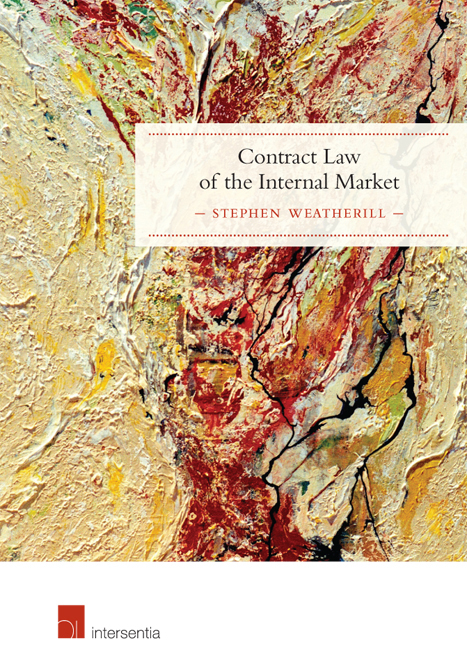Book contents
- Frontmatter
- Preface
- Contents
- Table of Cases: Alphabetical
- Table of Cases: Chronological
- Chapter 1 The Landscape of Contract Law in the EU
- Chapter 2 Contractual Autonomy and National Contract Law in the Internal Market
- Chapter 3 The EU as a Source of Contract Law
- Chapter 4 Themes and Principles in the EU's Contract Law Acquis
- Chapter 5 Improving the Regulatory Environment
- Chapter 6 Models of Harmonisation: Maximum or Minimum
- Chapter 7 Measuring the Effects of the Contract Law of the Internal Market
- Index
Chapter 1 - The Landscape of Contract Law in the EU
Published online by Cambridge University Press: 19 September 2018
- Frontmatter
- Preface
- Contents
- Table of Cases: Alphabetical
- Table of Cases: Chronological
- Chapter 1 The Landscape of Contract Law in the EU
- Chapter 2 Contractual Autonomy and National Contract Law in the Internal Market
- Chapter 3 The EU as a Source of Contract Law
- Chapter 4 Themes and Principles in the EU's Contract Law Acquis
- Chapter 5 Improving the Regulatory Environment
- Chapter 6 Models of Harmonisation: Maximum or Minimum
- Chapter 7 Measuring the Effects of the Contract Law of the Internal Market
- Index
Summary
CONTRACTS AND CONTRACT LAW
A contract sets out the terms on which the parties agree. The contract is typically an exchange of promises. It may be very simple and the transaction may be immediate – an agreement to pay a price in return for a bar of chocolate. It may be very complicated and may envisage a long-term relationship between the contracting parties – supply of goods or services or a combination of both over a period, with payment due in instalments as the work progresses. But the basic common idea is that the parties enter into a contract in order to benefit from it. They should both be better off as a result of the exchange envisaged by the contract.
It follows that contract law has the function of facilitating and protecting the process of exchange. Contract law stipulates the form in which promises should be made in order to be treated as legally enforceable. It then ensures that promises are kept and, where they are not, it stipulates appropriate sanctions. Legal enforceability serves to grant confidence to those entering into contracts that their expectations will be met, which is of particular importance where the planned deal envisages a long-term relationship between the contracting parties. The law therefore promotes freedom to participate in exchange. It encourages parties to sign up to deals because they know they will be reliably performed and, if they are not, sanctions will be imposed. Contract law provides certainty and predictability.
So contracts and contract law are central to the market economy. More generally the decision whether to enter into a contract or not and, if so, with whom is an expression of personal autonomy and individual freedom. There is a political context. Sometimes, however, an agreement may be entered into without the necessary element of freedom or full understanding. Contract law may therefore perform the function of stopping agreements being used for purposes for which they are not intended by both parties. Rules allowing the review of contracts entered into under duress or as a result of fraud come into play here.
- Type
- Chapter
- Information
- Contract Law of the Internal Market , pp. 1 - 10Publisher: IntersentiaPrint publication year: 2016



